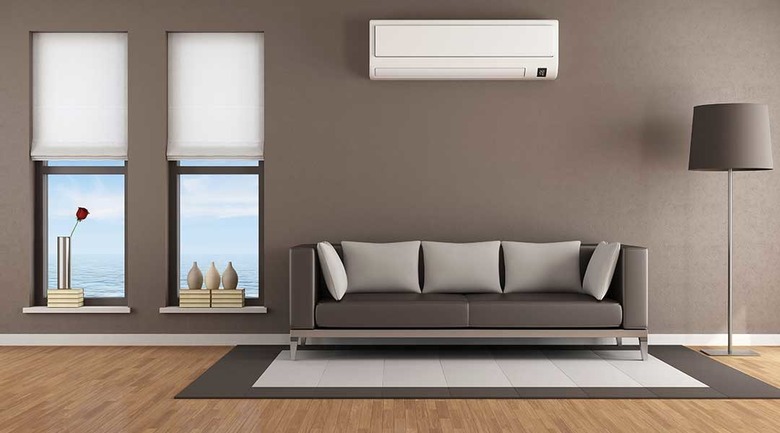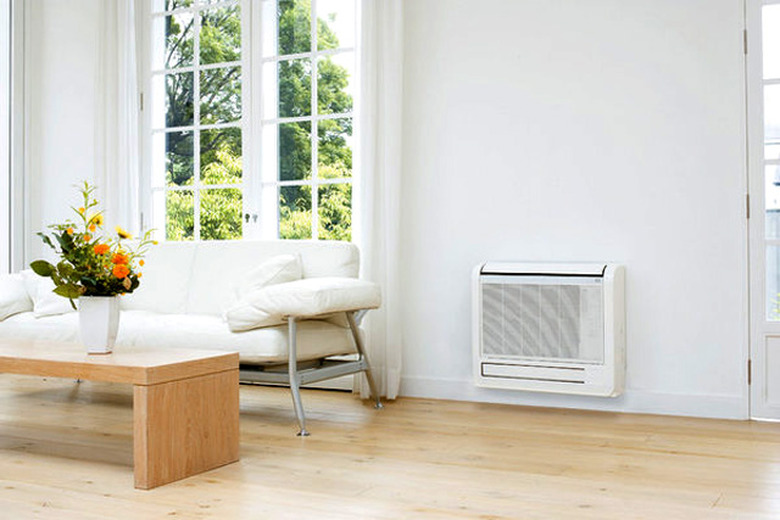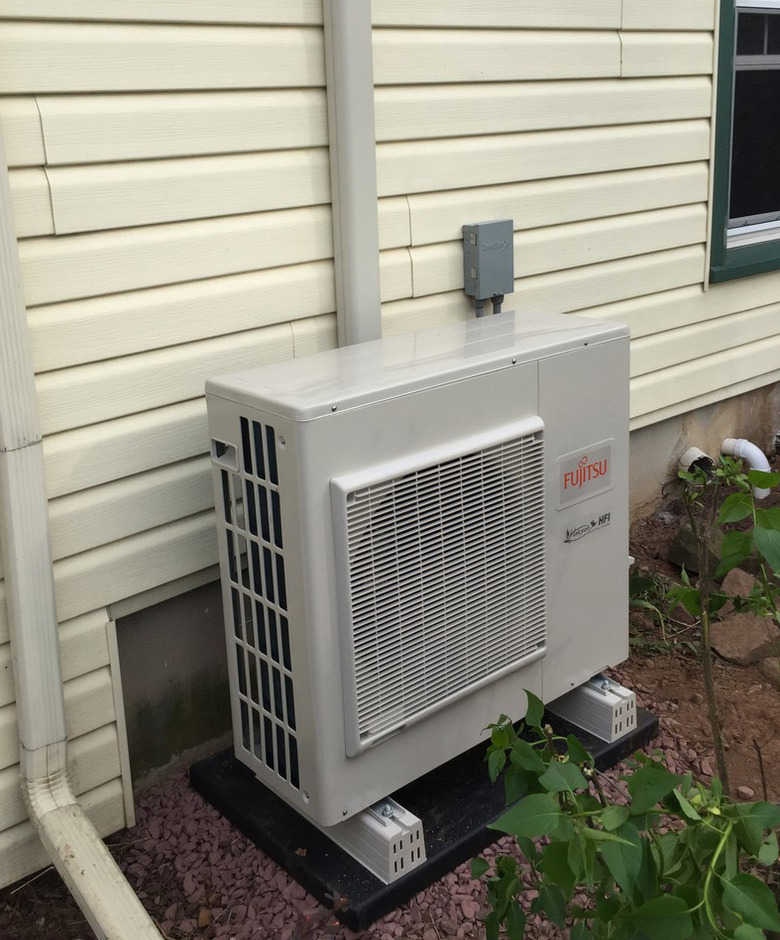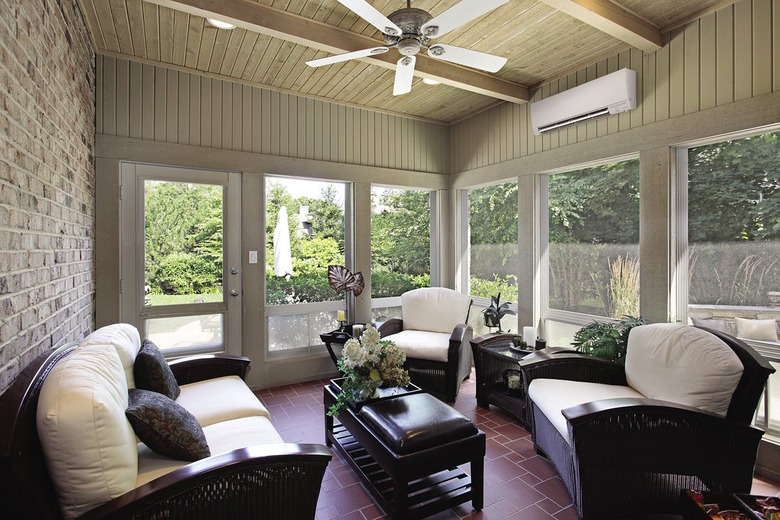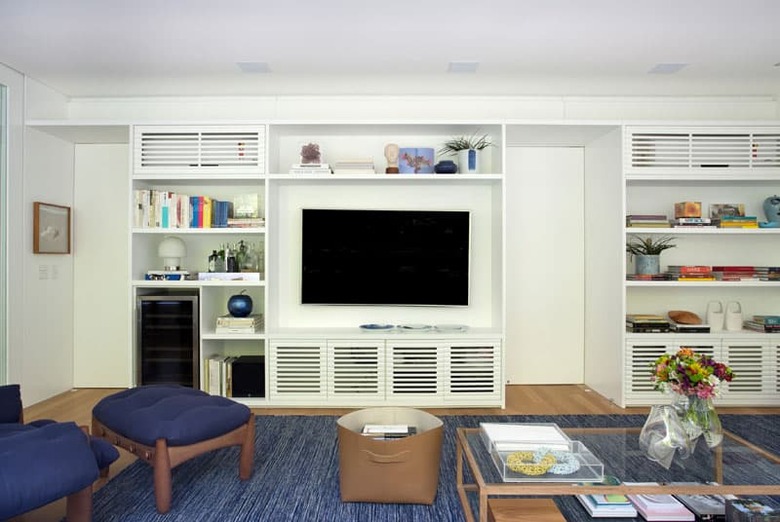The Pros And Cons Of A Ductless Heating And Cooling System
Ductless heating and cooling systems have become a popular alternative to window air conditioners, baseboard supplemental heaters and space heaters for rooms that are not adequately served by central heat or air conditioning. Because the components are split between an outdoor condenser/compressor unit and one or more indoor air handlers, these ductless units are sometimes called mini-split systems.
Direct Ductless Connection to Each Room
Direct Ductless Connection to Each Room
Unlike central heat and air, which incorporates the indoor air handling function into the furnace assembly using the furnace's blower and ductwork to distribute the warmed or cooled air, in a ductless system, each interior air handler is connected directly to the outdoor condenser and serves a single room. Multi mini-split systems can warm or cool as many as eight separate rooms—each with its own independent air handler—from a single condensing unit. The interior air handlers are typically mounted high on a wall, ideally an outside wall to simplify and minimize the run of refrigerant lines. For optimum efficiency they must be located so that their air output is distributed evenly throughout the room. Some ductless systems also offer air handler units that can be mounted in the ceiling, cassettes designed for insertion into a dropped ceiling, and floor units that mount low on the wall.
An End to Thermostat Squabbling
An End to Thermostat Squabbling
Each air handler/heat pump is controlled by its own thermostat or remote control, making it possible for some units in a multi mini-split system to warm their rooms while others cool. In general, mini-split systems are better at cooling than they are at providing heat. One obvious reason for this is that cool air falls but heat rises. Consequently, ductless heating as the primary HVAC system is not considered adequate in regions where the temperature regularly goes below 0 degrees Fahrenheit.
Ductless heating and cooling offers a practical heating and cooling solution to homes where the primary heating is provided by hot water or electricity and is therefore ductless. In new additions, sunrooms, mother-in-law suites and man caves, ductless systems can provide not only heating and cooling but also air filtration and humidity control without having to run new ductwork or overtaxing your existing HVAC.
Eliminating Ductwork Allows Greater Efficiency
Eliminating Ductwork Allows Greater Efficiency
Manufacturers tout the energy efficiency of ductless heating and cooling. They maintain that ductwork loses, on average, 25 percent of the energy produced. Where the ductwork is uninsulated and passes through a space that is not heated or cooled, that is likely the case. Ductless systems also modulate their output by speeding up or slowing down rather than shutting down entirely, as central air compressors do. Starting up a whole house air conditioning compressor from a full stop can take as much as twice the power it will need when up and running. But by running continuously, mini-split systems avoid that start-up surge and maintain the temperature more evenly.
Assuming that the individual air exchangers in a multi mini-split setup are correctly sized for your rooms—and a qualified HVAC contractor can help you calculate this—a ductless system can save energy by measuring out to each room the precise amount of heating and cooling you require—no more overheated or chilly rooms, no heating empty rooms
Advantages of Ductless Heating and Cooling
Advantages of Ductless Heating and Cooling
- Simpler installation. In some applications, particularly with a single-zone setup, installation can be quick and minimally disruptive. Multi-unit mini-split systems, where the power and refrigerant conduit must be run from the outside condenser to several interior rooms, will naturally be more labor intensive.
- Greater security. A window-mounted air conditioner represents a vulnerable point of access. A ductless system requires only about a 3-inch hole in the exterior wall for the conduit.
- Better air quality. In addition to warming and cooling the air, many mini-splits also filter the air and remove excess humidity.
- Safer. Ductless units don't pose the hazards from fumes or fire associated with gas or electric space heaters.
- Quiet. The interior heat pumps and air exchangers are whisper-quiet compared to the typical window air conditioner, especially because it runs continuously instead of stopping and starting.
Disadvantages of Ductless Heating and Cooling
Disadvantages of Ductless Heating and Cooling
- Greater expense. Installing a single mini-split unit costs several times what you would pay for a window air conditioner or supplemental baseboard heaters. If you live in a climate where a whole house mini-split system is practicable, installing that system would cost two to three times as much as upgrading a ducted system. The superior efficiency of the ductless system means that you might eventually make up the difference through reduced energy costs, but that is subject to variables such as climate and your local electricity rates.
- Appearance. The indoor air exchangers are relatively large and obtrusive. They are usually mounted high on the wall where they can be plainly seen and because their function is air circulation, that circulation must not be impeded. Ceiling-mounted units are less visually interruptive.
- Increased maintenance. To keep the air exchangers operating properly, their filters need to be removed and cleaned monthly. In homes with pets or smokers, this regular maintenance may have to be repeated more often.
- Limited heating capability. The ability of the mini-split's heat pump to extract warmth from cold air is limited. In regions where the temperature regularly falls below freezing, a ductless heater may not provide adequate heat.
Some of the disadvantages of a ductless heating and cooling system, like the aesthetics of the indoor air exchangers, are subjective and will depend on the particulars of the installation. Mini-split systems are more efficient than ducted HVAC systems in terms of the energy required to produce a certain output of heating or cooling and that's an advantage, provided that output is adequate for your comfort. A qualified contractor can determine the size of unit or units you will require and their approximate costs and hopefully he or she would advise you as to the practicability of ductless heating and cooling in your climate. In addition, it's a good idea to solicit the experiences of other homeowners in your area who have installed ductless systems.
